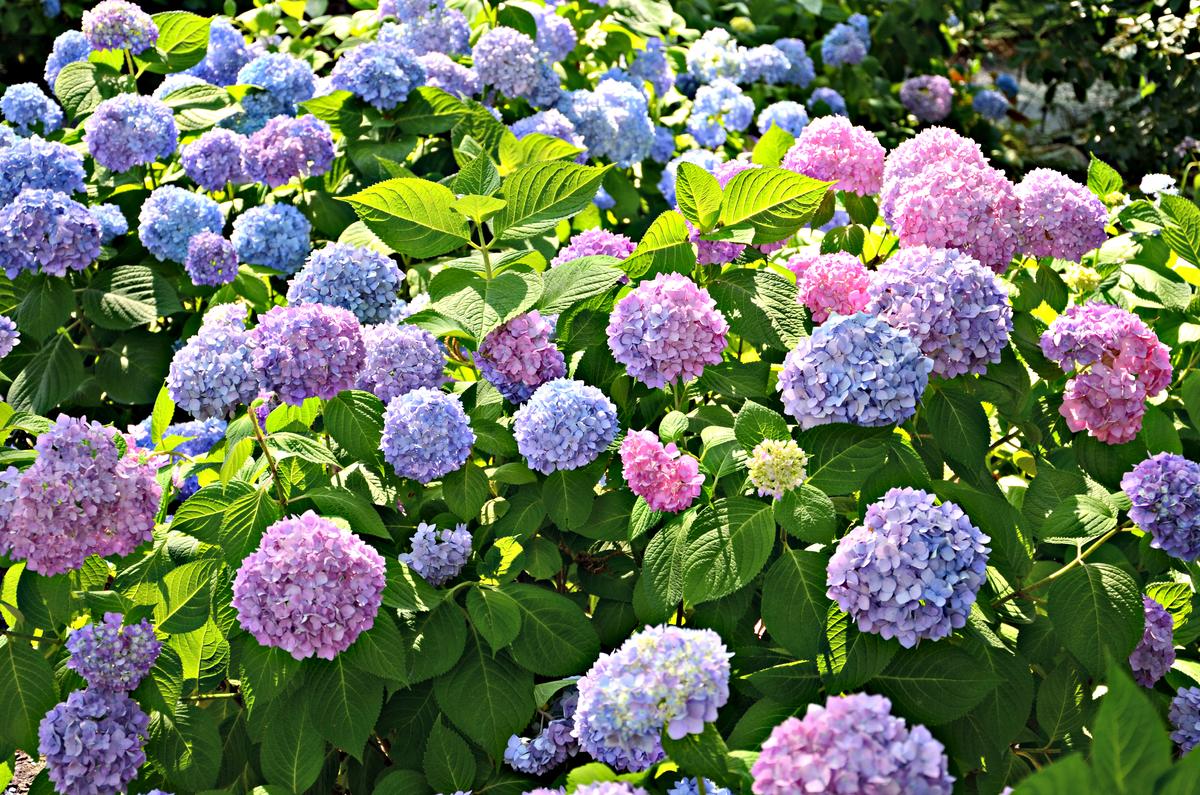Common Name: hydrangea
Scientific Name:
Family: Taxaceae
Genus: Hydrangea
Species: spp.
Hardiness Zone: 3 to 9
Height: 3 to 6 ft
Width: 3 to 12 ft
Common Characteristics:
Hydrangeas are deciduous shrubs and come in a variety of species and cultivars. The bark is light brown with stems ranging from brown, gray, green, and red/burgundy. The dark green leaves are opposite, simple with margins that can be toothed or lobed. Round terminal, umbrella-shaped flowers can be white, pink, blue, or purple depending on the specimen and soil type. Flowers bloom from midsummer to fall.
Where it Grows:
Hydrangeas tolerate a wide range of soil pH, which gives a wide range of different bloom colors. Acidic soils (having less than 5.5 pH) produces blue flowers. Alkaline soils (higher than 6.5 pH) produce pink flowers. Any pH in between will produce purple flowers. The shrub prefers moist well-drained soil and full sun to part shade. They will not do well in hot and dry areas. It can grow in naturalized areas, walkways, and woodlands.
How it's Used:
Widely used as a landscape shrub in borders, foundations, hedges, and mass planting. It also looks well in landscape themes such as cottage, English, and pollinator gardens.
Ecosystem Services:
The flowers attract butterflies, bees, and other insect pollinators.
Where it is Native to:
Most of the 23 species are native to Asia, while 5 species are native to the United States.
Known Varieties and Their Traits:
- Hydrangea anomala "Climbing hydrangea": Climbing hydrangea has rich green foliage, mid-summer white flowers, yellow fall color, and striking exfoliating bark in winter.
-
Hydrangea arborescens "Smooth hydrangea": Several named cultivars have sterile flowers making a ball-shaped bloom. A few modern hybrids have been bred to have pink flowers. It is very cold hardy but will also grow in warmer climates.
-
Hydrangea macrophylla "French hydrangea": A shade-loving shrub that can produce ball-shaped flower clusters ("Mopheads") or flat clusters of small flowers surrounded by a ring of more prominent flowers ("Lacecaps"). Colors range from white to pink, blue, or purple flowers, depending on the soil's acidity.
-
Hydrangea paniculata "Panicle hydrangea": A multi-stemmed deciduous shrub but can also be trained to grow as a small single-trunk tree. It has upright, spreading, irregular, semi-arching branches. It is one of the most winter-hardy of the hydrangeas and thrives in urban conditions and is more drought tolerant than other hydrangeas.
-
Hydrangea quercifolia "Oak leaf hydrangea": Oakleaf Hydrangea is a deciduous shrub that may grow to 8 feet. It has 4- to 12-inch oakleaf-shaped leaves that are fuzzy when young. The leaves turn red or purple in the late fall. A pyramidal cluster of white blooms matures in the late spring and summer, turning purple with time. Tiny, dry seeds mature in the fall. This plant's common name is in reference to the leaves that look like those of Quercus (oak).
-
Hydrangea serrata "Mountain hydrangea": This is a smaller, more compact plant with smaller leaves and flowers. The flowers have clusters of small florets in the center with a few larger, showy florets toward the outside of each cluster. Flower color varies from blue to pink relative to soil pH.
Problems:
The bark, buds, and flowers are toxic if large quantities are ingested. Hydrangeas can get minor pests and diseases such as powdery mildew, leaf spots, aphids, and scale insects.
References:
